What Defines Humanity?
A Wisconsin architecture student breaks ground on 3-D printed classrooms in Madagascar in a bold response to staggering illiteracy rates.
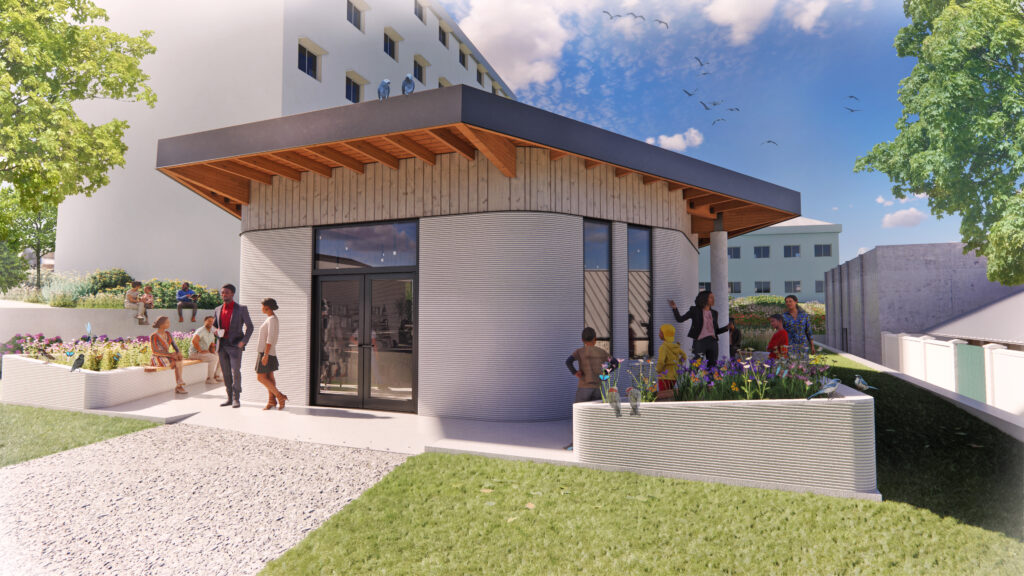
Defining Humanity is a nonprofit organization that believes in architecture’s power to positively influence real lives across the world. In collaboration with Thinking Huts, we are using 3D printing technology to build 100 classrooms worldwide to combat child illiteracy.
Today there are over 34 million out-of-school children in sub-Saharan Africa. To put it in perspective, this is equal to six times the population of Wisconsin.
When we see those numbers, we see the potential of 34-million talented youth who are currently unschooled, living on less than $1.90 per day1, who, if educated, could transform the future of our globe completely. Their perspectives, minds, and labor force could advance every area of study, support economic growth, and increase taxpayer dollars, all while creating better opportunities for future generations.
But for this vision to become possible, drastic changes are required.
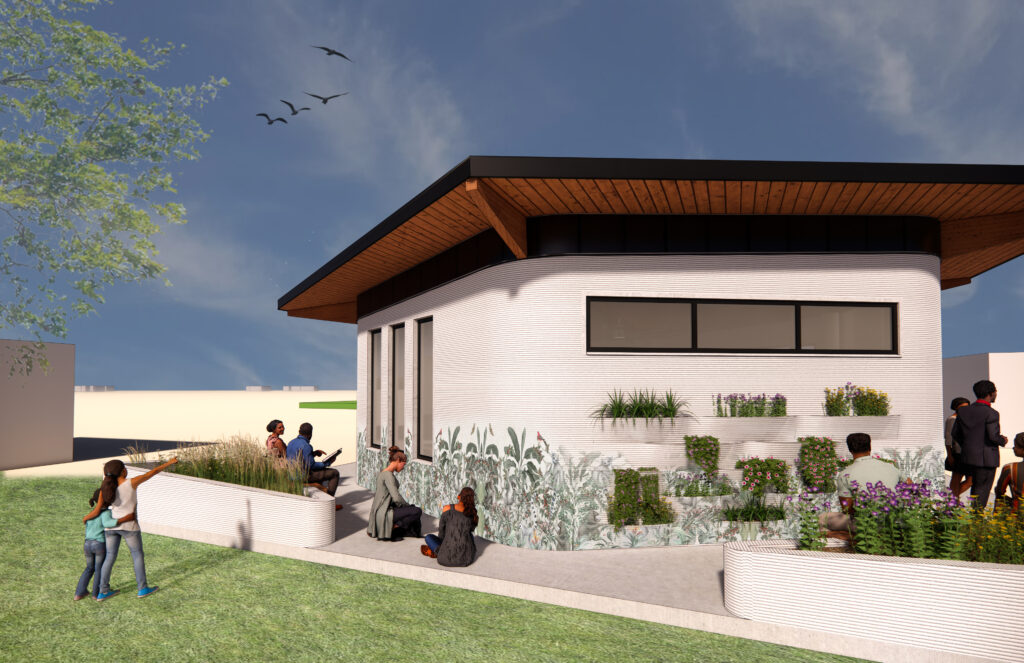
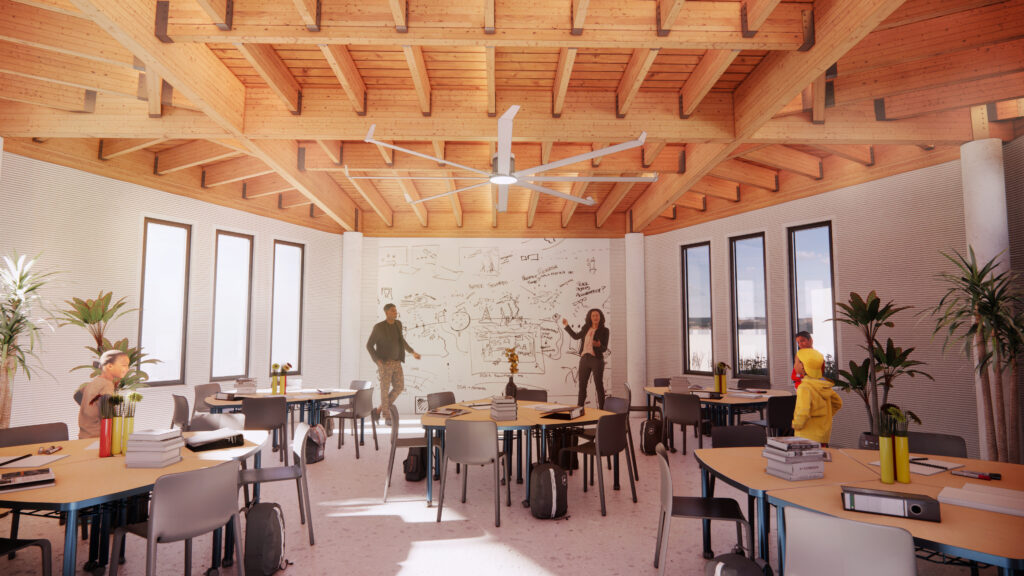
Collaboration
Our pilot project is breaking ground as I write this. Located at the EMIT Public University of Fianarantsoa, Madagascar, will be a 700 square-foot, hexagonal, 3D printed classroom. And while the pilot project has taken a year of hurdle-jumping, problem solving, and planning, we have paved the way for an efficient building process that has the potential to change lives across the world.
I strongly believe that if I am not a part of the solution, I am part of the problem. Since 2015, I have been running two non-profits; one in India, and one more recently in the United States. After being introduced to Maggie Grout at Thinking Huts, we have been collaborating on this ambitious project to 3D print 100 classrooms worldwide.
The Thinking Huts team looks at fundraising and other infrastructure for the project while Defining Humanity helps with design, construction, drawings, coordination, renderings, 3D printing models, virtual reality models for fundraising, and more.
This is truly a global initiative. Collaborating during the pandemic meant access to a global team of experts, but it also meant juggling remote work responsibilities, screen fatigue, five time zones, plus language barriers and translation.
The project’s two lead designers are Wisconsin-based, myself (Yash Mehta, Assoc. AIA) and Bruno Silva, AIA. Our accountant Elaine Li Can is from China. Matteo, our structural engineer, is from Italy. We all, alongside Ella, our local representative in Madagascar, “14 Trees” the 3D print consultants from Kenya, and Hery, the local contractor, spent many months of coordination and hundreds of hours on Zoom calls translated in various languages to make this dream come to reality.
Planning
We inherited the hexagon design shape from Thinking Huts. Inspired by a honeycomb and envisioned as a beehive cluster of many classrooms coming together to create a campus, it was our job to take this vision pitched to project donors and make sure it was functional, safe, practical to construct, and optimized to our very tight budget. We made sure to incorporate local materials. Due to Madagascar being an island, transportation increases the cost. For example, the insulation in Madagascar is six times more expensive. The many challenges of site and infrastructure dictated simplicity of design.
Building
It takes less than 15 hours to 3D print a single classroom.
And these classrooms are more than just an educational space. They provide multiple purposes in the community – education during the day, space for other activities and social gatherings in the evening. We have been actively receiving feedback from our collaborative efforts with the community throughout this project and adjusting our program in response.
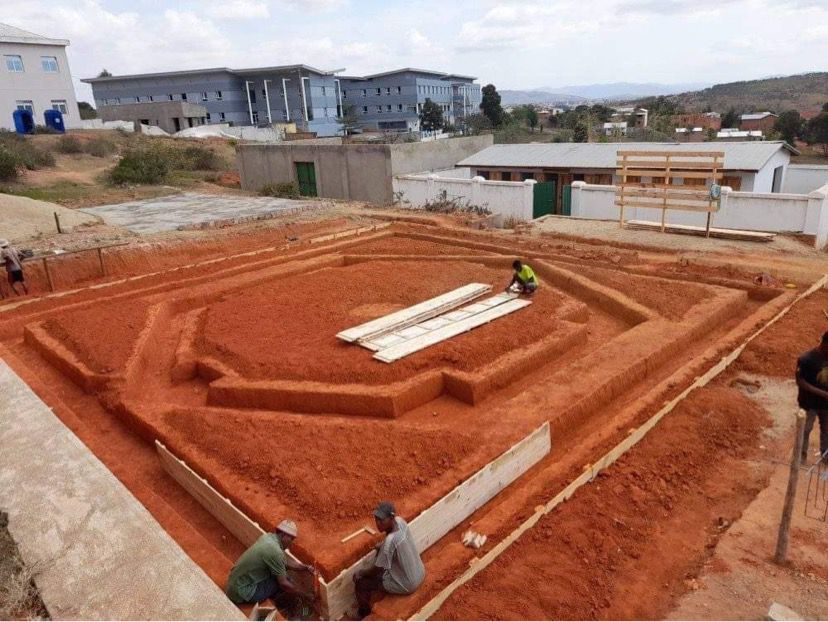
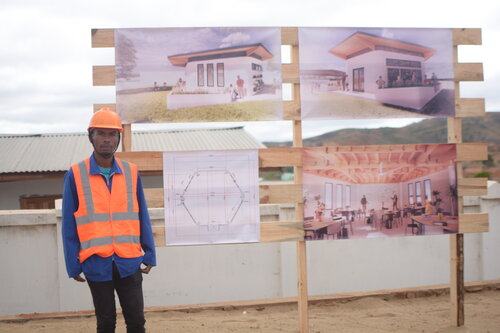
As simple and obvious as this idea seems, it’s not so simple to fulfill. Our Madagascar pilot project has taken over a year of active planning. The printing process may be fast, but infrastructure did not exist for us to transport the 3D printer. Once moving through the complicated process of shipping the printer to this island nation, we had to develop over 500 feet of driveway to move materials onto the site. We use a firetruck for water supply. Soil quality too was a big issue. And due to the lack of reliable internet access, setting up our local team took months.
Still, it is my belief that problem-solving design coupled with positive intention and committed ambition can intentionally build the world we dream of creating. We have the technology, ideas, and people to accelerate this process and provide life-changing support to those who would benefit most. And with that, I believe we also have a responsibility to do so. This project is an example of what architecture can do when applied to significant and systemic problems in the world at large.
Future Use
In addition to building the classrooms, we also are making canteens, dining facilities, common toilets, and more. We’re using local labor during the build process and have plans to train the local people and university to use the technology as well. And we have training programs planned for teachers who will use the classroom spaces.
With the pilot build as a proof, we are excited to print more schools in the coming years. The future of this project is not only limited to Madagascar but will expand all over the globe in countries like Indonesia, India, Tanzania, etc.
Bruno and I am writing some optimizing Grasshopper scripts for the new 3D print design which has a unique, beautiful, and functional form possible only through 3D printing. We might be using clay instead of concrete as a way of exploring more sustainable options.
The future is brighter than ever. Equal opportunity is deserved by everyone. We need to create the kind of world we want our future generations to live in and inspire them. Education can empower anyone to change their lives. Let’s plant the seeds today, so our future generations can enjoy the shade tomorrow!

